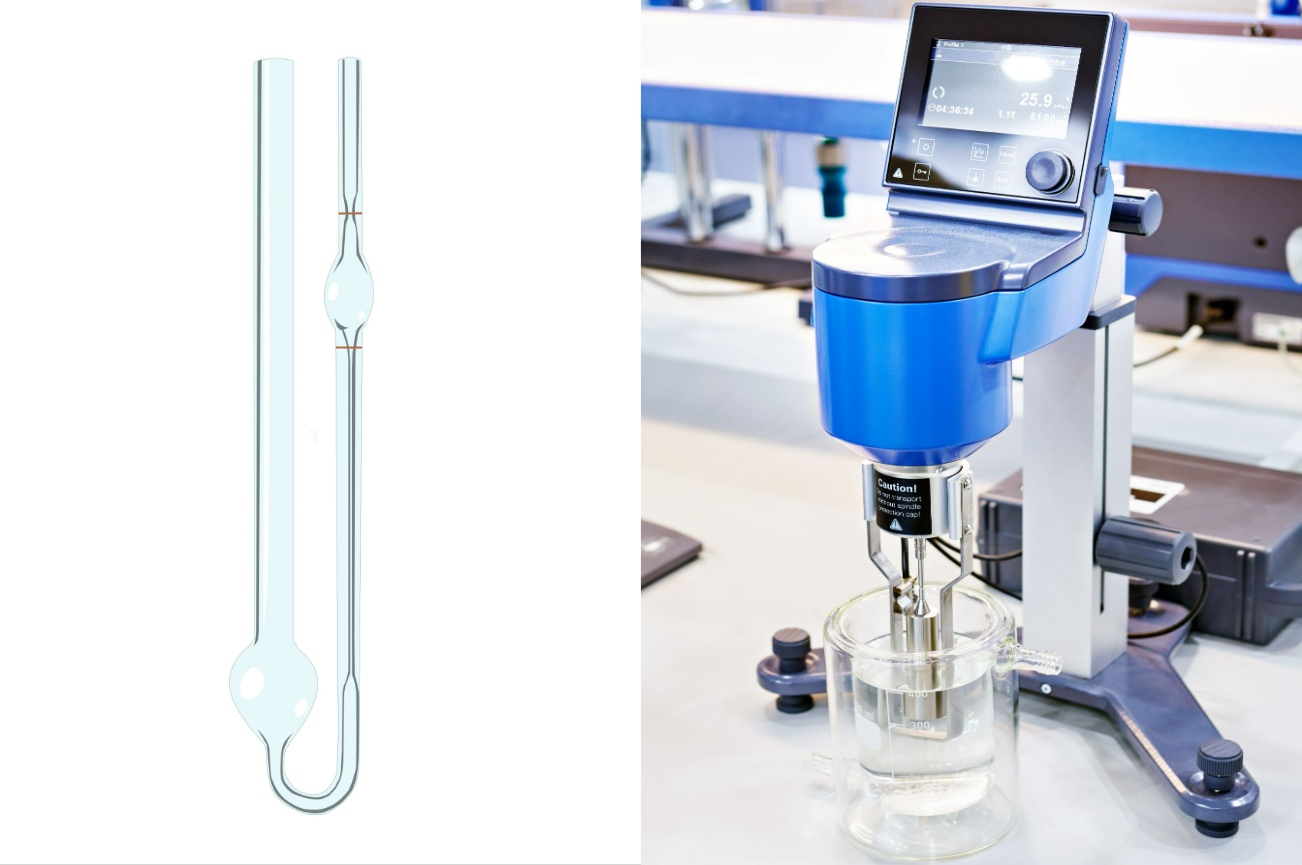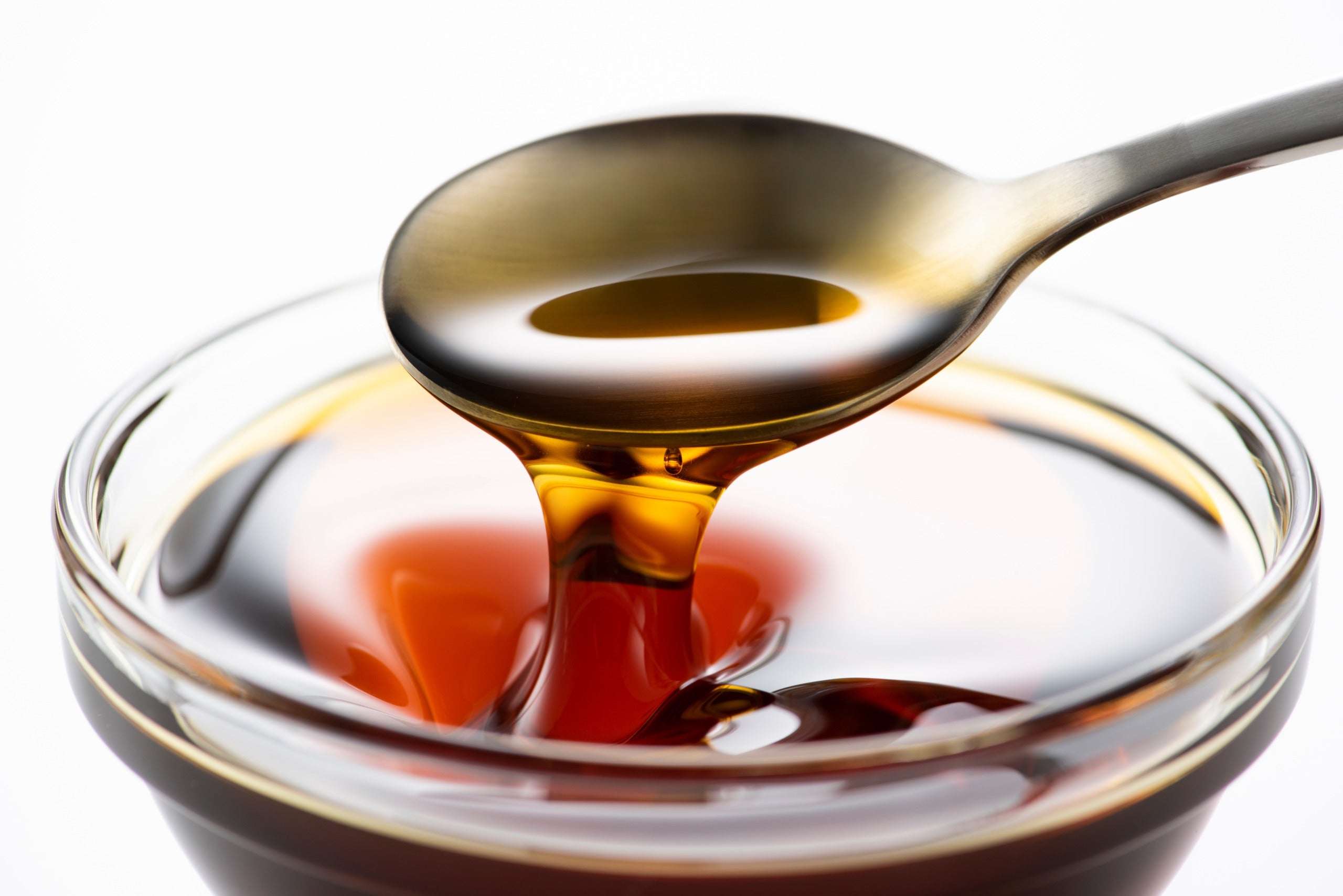Glycerin Viscosity Measurement: Impact of Temperature and Concentration on Quality Control

Glycerin is a multifunctional compound used in a wide range of applications, including cosmetics, food, and pharmaceuticals. Among these, viscosity is one of the important properties of glycerin and plays an important role in quality control and product development.
| *This article is primarily intended for businesses customers considering the selection or implementation of viscometers. It is not designed to provide information for research purposes or academic citations. We kindly ask for your understanding in this regard. |
Glycerin type and viscosity
Basic information on glycerol
| Formula | C3H8O3 |
| Odor | Odorless |
| Density | 1.261 g/c㎥ |
| Melting point | 18℃ |
| Boiling point | 290℃ |
There are various types of glycerin, including pure glycerin, aqueous glycerin, and vegetable glycerin, each with a different viscosity.

We will explain the derivation of the viscosity calculation formula.
Viscosity Definition:
η = τ / 𝛾˙ |
where is the viscosity, is the shear stress, and 𝛾˙ is the shear rate.
The units of viscosity are as follows.
- Pa·s (pascal second)
- cPs (centipoise)
Kinematic Viscosity Definition:
Kinematic viscosity is the viscosity divided by the fluid's density and is defined by the following equation:
ν = η / |
where is the kinematic viscosity, is the viscosity, and is the density.
The units of kinematic viscosity are as follows:
- St (stokes)
- cSt (centistokes)
100 cSt is 1 St.
| Related post: What is viscosity? It also introduces the units used in viscometers.|Rion viscometer online shop |
Viscosity of pure glycerin
Pure glycerin is a colorless, odorless liquid with a viscosity of approximately 870 Pa·s (870,000 cP) at 20°C. As the temperature increases, the viscosity decreases, reaching approximately 450 Pa·s (450,000 cP) at 40°C.
Viscosity of glycerin water

The viscosity of a glycerin water varies depending on the concentration of glycerin and the temperature. In general, the higher the glycerin concentration and the lower the temperature, the higher the viscosity.
Viscosity of vegetable glycerin
Vegetable glycerin is glycerin made from vegetable oils rather than animal fats. It has fewer impurities than pure glycerin, so it has a lower viscosity, about 650 Pa·s (650,000 cP).
[Temperature/Concentration/Purity] Three factors that determine the viscosity of glycerin
The viscosity of glycerin is determined by three factors:

Temperature
As the temperature increases, the thermal motion of the glycerin molecules increases, making it more fluid and therefore less viscous.
The viscosity of glycerin at 20°C, 25°C, 30°C, and 40°C are as follows.
| Temperature | Viscosity (Pa·s) |
| at 20℃ | Approx. 1700 |
| at 25℃ | Approx. 1200 |
| at 30℃ | Approx. 1000 |
| at 40℃ | Approx. 870 |
The viscosity of glycerin at room temperature is 870 to 1700 Pa·s.
Concentration
As the glycerin concentration increases, the interactions between the glycerin molecules become stronger, reducing fluidity and therefore increasing viscosity. Below is a table of glycerin viscosities.
| Glycerin concentration | Viscosity at 20℃ (Pa·s) |
| 100% | Approx. 2500 |
| 50% | Approx. 1700 |
| 25% | Approx. 1200 |
| 10% | Approx. 870 |
Glycerin Viscosity Chart (vs. Temperature, vs. Water)
Check out this chart to see how glycerin's viscosity varies with temperature and concentration.

Purity
The viscosity of glycerin is greatly affected by its purity. Below is a table of glycerin viscosities.
| Purity | Viscosity at 20℃ (Pa·s) |
| High | Approx. 870 |
| Medium | Approx. 1000~1500 |
| Low | Approx. 1500~ |
Glycerin Viscosity FAQs
How to increase the viscosity of glycerin?
1. Lower the temperature
The viscosity of glycerin increases as the temperature decreases, so the easiest way to increase the viscosity of glycerin is to lower the temperature.
2. Increasing the concentration
The viscosity of a glycerin solution increases as the concentration of glycerin increases. Therefore, to increase the viscosity of glycerin, it is necessary to add water to decrease the concentration.
3. Use additives
Certain additives can increase the viscosity of glycerin. For example, the viscosity of glycerin can be adjusted by adding high molecular weight polymers or thickeners.
How to reduce the viscosity of glycerin?
1. Increase the temperature
The viscosity of glycerin increases as the temperature decreases, so the easiest way to increase the viscosity of glycerin is to lower the temperature.
2. Reduce the concentration
The viscosity of a glycerin solution increases as the concentration of glycerin increases. Therefore, to increase the viscosity of glycerin, it is necessary to add water to decrease the concentration.
3. Adding water
Certain additives can increase the viscosity of glycerin. For example, the viscosity of glycerin can be adjusted by adding high molecular weight polymers or thickeners.
Importance of glycerin viscosity measurement

Glycerin viscosity measurement plays an important role in quality control and manufacturing processes.
The role of viscosity measurement in production and quality control
The viscosity measurement of glycerin can grasp the following quality indicators.
- Purity
- Deterioration level
- Moisture content
- Amount of additives
- Viscosity value
- Dynamic viscosity
- Viscosity coefficient
These indicators go a long way in stabilizing product quality.
Examples of quality control based on viscosity measurement
Measurement of glycerin viscosity contributes to quality control and efficient manufacturing processes in a variety of fields.
Cosmetics

The viscosity of cosmetics affects the feel when used, the finish, and storage stability. By adjusting the viscosity based on viscosity measurements, it is possible to produce high-quality cosmetics.
Food additives

The viscosity of food additives affects the texture and storage stability of food. By adjusting the amount and type of additive based on viscosity measurements, it is possible to produce high-quality food additives.
Pharmaceuticals

The viscosity of pharmaceuticals affects the dissolution rate and absorption rate of drugs. By adjusting the viscosity based on viscosity measurements, it is possible to produce safe and effective pharmaceuticals.
How to measure the viscosity of glycerin
Measuring the viscosity of glycerin plays an important role in quality control and manufacturing processes.
Types of viscometer
The following viscometers are suitable for measuring the viscosity of glycerin.
Rotational viscometer

Rotational viscometer is the most common viscometer. It measure the resistance of a rotating rotor.
| Advantages | High accuracy, wide range of viscosity measurements possible |
| Disadvantages | Expensive, complicated operation |
Falling Viscometer

Falling viscometer is a simple and inexpensive viscometer. It measures the time it takes for a certain amount of capsules to fall.
| Advantages | Inexpensive, easy to operate |
| Disadvantages | Low accuracy, not suitable for high viscosity measurement |
The best way to measure the viscosity of glycerin is with a rotational viscometer.
For more information on the types of viscometers, see the following article:
| Related article:Introducing 8 types of viscometers|RION viscometer online shop |
Glycerin viscosity measurement procedure
The viscosity of glycerin is measured by the following procedure.
|
When measuring the viscosity of glycerin, the following points should be taken into consideration.
- Keep the measurement temperature constant.
- Avoid introducing air bubbles.
- Interpret the results taking into account the measurement temperature and concentration.
RION's viscometer is recommended for measuring viscosity!

RION's viscometer is recommended for the following three reasons.
1.Confidence in accuracy
RION has a long history of manufacturing and developing viscometers. Utilizing our many years of knowledge and experience, we are able to achieve accurate viscosity measurements that are competitive with our competitors.
2.Portable type that can be measured anywhere
Most common viscometers are large and heavy. However, RION's VT-06 is compact and lightweight while maintaining measurement accuracy. The structure is simple, so even people with no knowledge or experience of viscosity measurement can easily measure it.
3.Loved by many customers around the world
RION is a Japanese manufacturer, but the viscometer VT-06 is used not only by customers in Japan but also by customers in countries around the world. VT-06 may be used for quality control in the things you usually use and eat.



